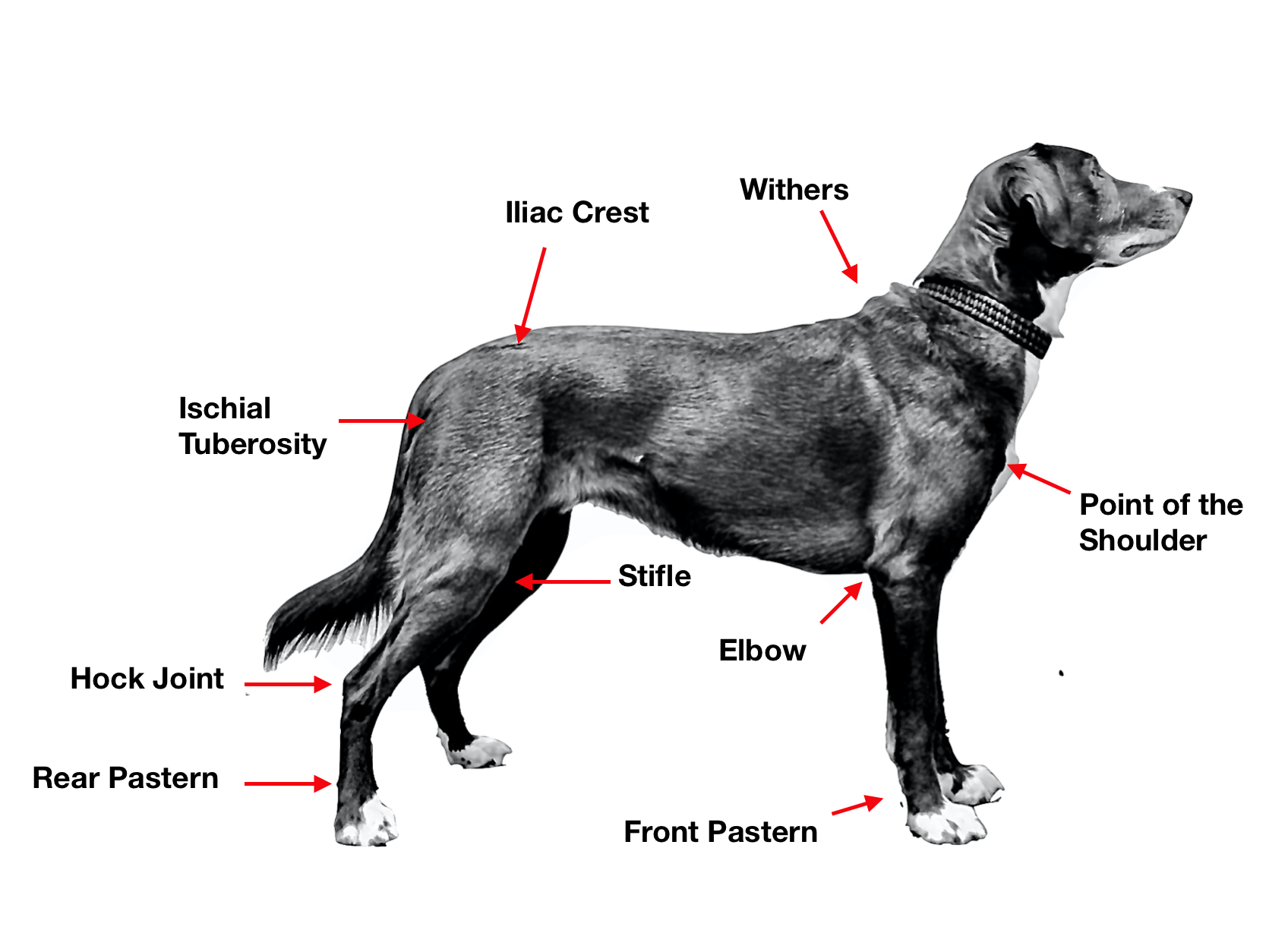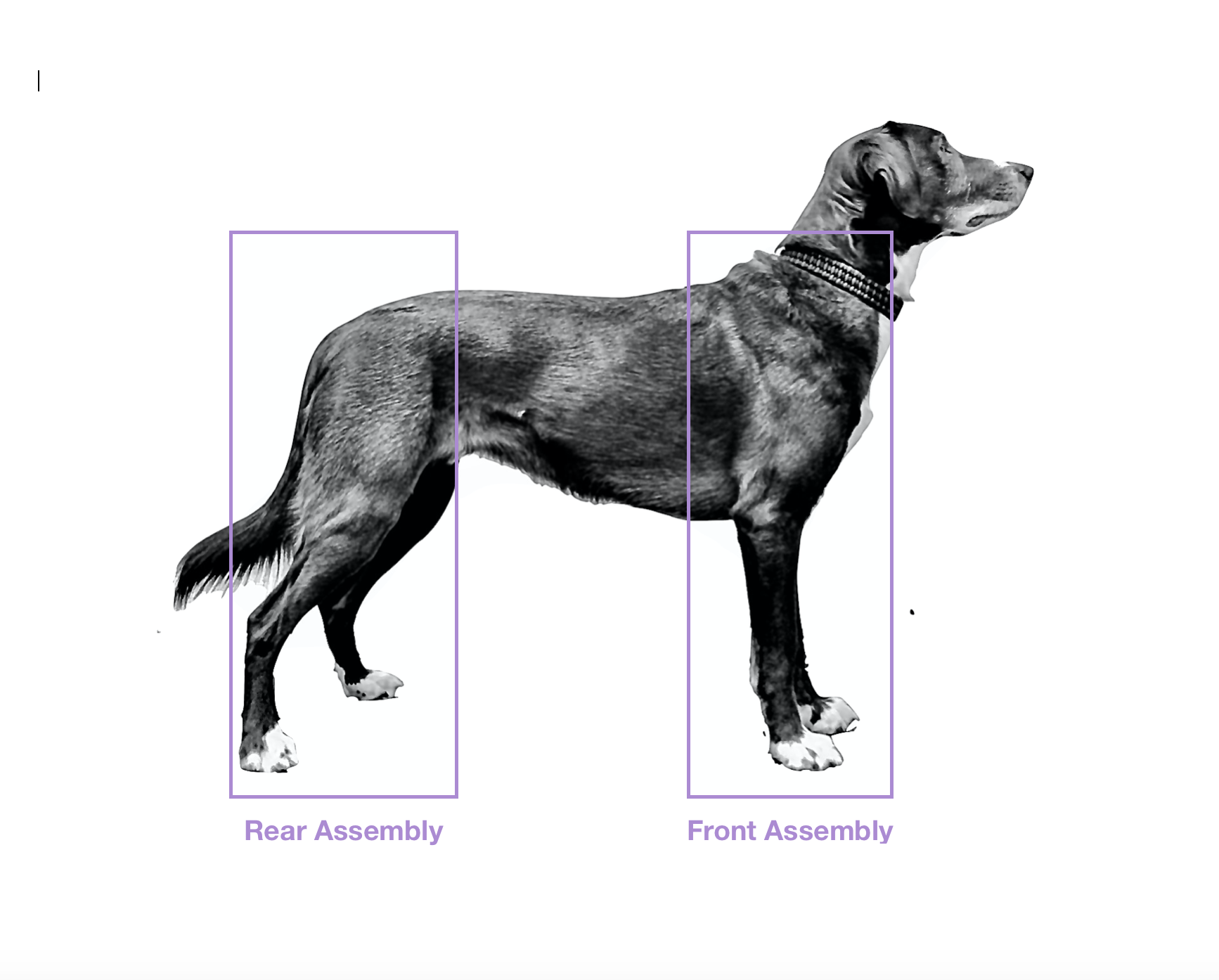Have you ever had someone speak to you in a foreign language, and you just nod your head and smile because it’s easier than trying to explain you don’t understand? I used to do that a lot when it came to canine anatomy. I knew the general terms, but the specifics were a complete mystery to me and I missed out on learning opportunities because I was too shy to say I didn’t understand.
This is why I’m providing these resources, to establish a common vocabulary so that you understand what I mean when I say something along the lines of “the line should be equidistant between the ischial tuberosity and the stifle”. Some of the anatomy is easy to identify, but there are a few bony landmarks that are a bit harder so I’d like to go over them briefly. In order to get the most out of this learning experience, I suggest you have your dog in front of you so that you can feel the bony landmarks.
Let’s start off with the withers. When you are looking at your dog, you will see a section of the back that is a transition point between the back and the neck. It usually has a noticeable incline, and if you feel it you will feel the upper border of the scapula (what we commonly call the shoulder blade). When your dog is walking beside you, if you have a short haired dog you can easily see the scapulae move.
Now move your hands down the front of your dog’s chest, about midway between the elbow and the crest of the scapula, and you’ll find the point of the shoulder. The elbow, crest of the scapula, and point of the shoulder form a triangle.
Let’s move our attention now to the rear end of the dog, starting with the iliac crest. The iliac crest is part of the pelvis, and if you run your hands lightly down each side of your dog’s spine towards the tail, you should feel an area with a slight rise and a transition from muscle to bone.
The second bony landmark you are going to look for in the rear assembly is the ischial tuberosity, also known as the “sit bone” in humans. This bone is typically fairly close to the anus, and it is fairly easy to find because it tends to jut out a bit on each side.
If you’re having trouble finding the iliac crest and ischial tuberosity, stand behind your dog with one hand anchored at each hip. If you raise your thumb up, you will be close to the iliac crest. Once you have found one, the other should be a mirror image in terms of placement. If you find one, you will find the other by putting your other hand in the same position.
The stifle is also referred to as the knee. If you are having trouble finding the stifle, just have your dog sit or lay down. Do you see where the upper leg bends? That’s the stifle.
One other side note – while there is a difference between the hock joint and the rear pastern, the vast majority of people interchange the terms “hock” and “rear pastern”.
Often when you hear dog people speaking, they will talk about “front assembly” and “rear assembly”.
“That dog’s rear assembly is over angulated.”
“There’s something wrong with her front assembly.”
“The angulation of the front and rear assembly should match.”
But what is the front and rear assembly?
Simply put, the front assembly is the shoulder and forearm of the dog. It includes the scapula, humerus, and everything below. The rear assembly is the hip, thigh, and rear limb of the dog. It includes the pelvis, femur, knee, and everything below.


